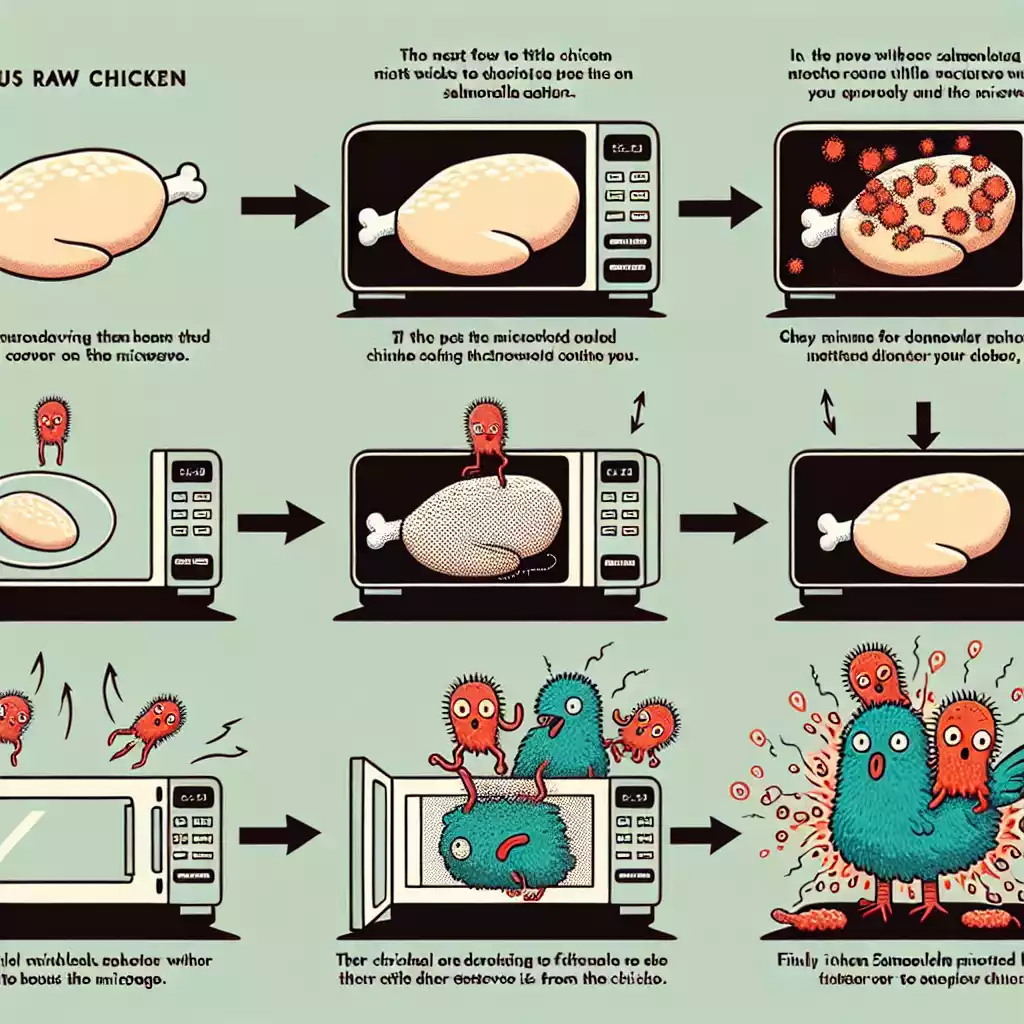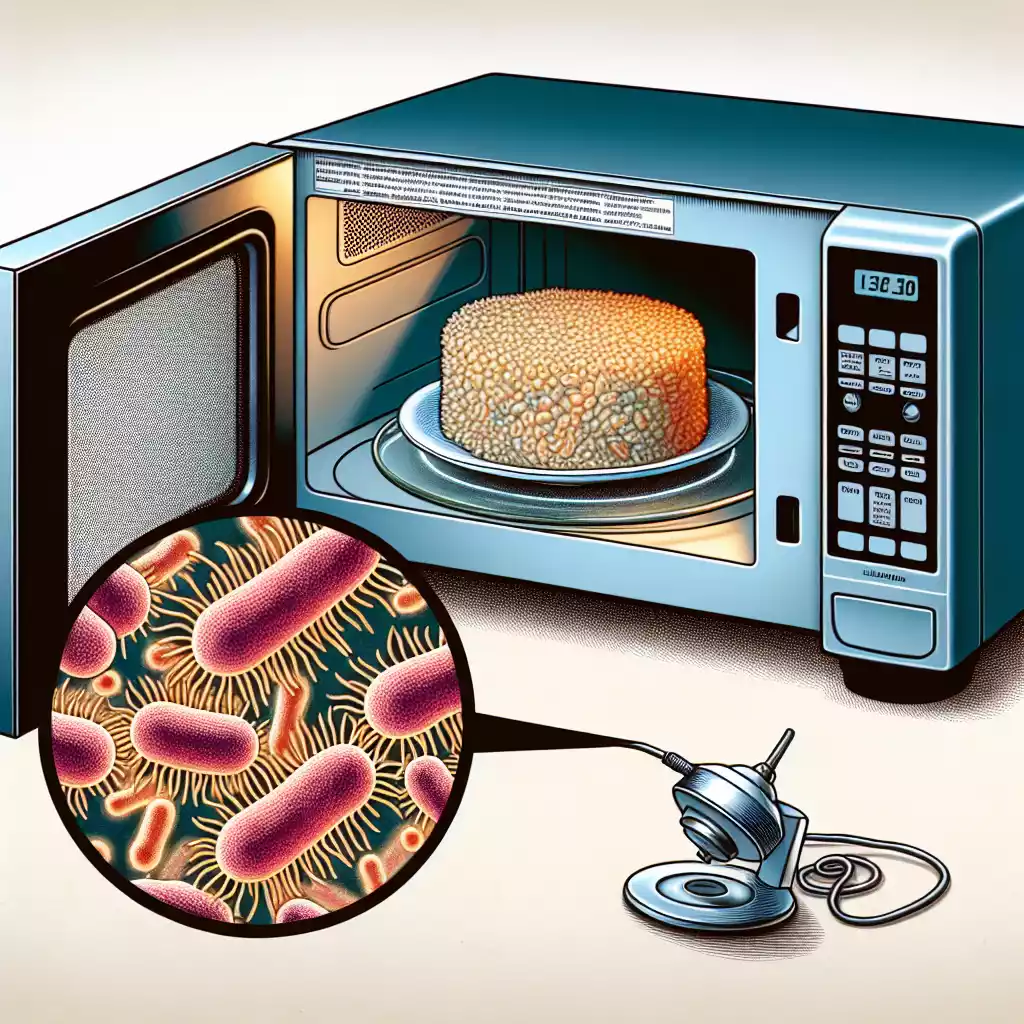Understanding Salmonella
What is Salmonella?
Salmonella is a type of bacteria that can cause food poisoning. Named after American scientist Dr. Daniel E. Salmon, it is often found in raw poultry, eggs, and unpasteurized milk. Symptoms of Salmonella infection include stomach cramps, diarrhea, and fever, typically appearing 6 hours to 6 days after consuming contaminated food.
Common Sources of Salmonella
Salmonella can be found in various foods, including:
• Raw meat and poultry
• Eggs and egg products
• Unpasteurized dairy products
• Fruits and vegetables contaminated with animal feces
Health Risks of Salmonella Infection
Salmonella infections can range from mild to severe. In severe cases, the infection can spread from the intestines to the bloodstream, leading to more serious conditions. Young children, the elderly, and individuals with weakened immune systems are particularly at risk.
Microwave Cooking and Food Safety
How Microwaves Work
Microwaves cook food by emitting electromagnetic waves that cause water molecules in the food to vibrate, producing heat. This heat cooks the food from the inside out. Microwaves are convenient for quickly heating and cooking a variety of foods.
Microwaving Different Types of Food
Different foods react differently in a microwave:
• Dense foods like meat may require longer cooking times.
• Watery foods like soups and stews heat more evenly and quickly.
• Frozen foods need to be defrosted before cooking to ensure even heating.
Common Misconceptions About Microwave Cooking
Many people believe microwaves cook food unevenly or that microwaving destroys nutrients. While it’s true that microwaves can sometimes heat food unevenly, proper techniques can mitigate this. Additionally, microwaving can actually preserve more nutrients compared to other cooking methods.
Effectiveness of Microwaves in Killing Bacteria

Studies on Microwaves and Bacteria
Scientific studies have shown that microwaves can kill bacteria, including Salmonella, if the food reaches a high enough temperature. According to the USDA, food must reach an internal temperature of 165°F (74°C) to be safe.
Factors Affecting Bacterial Elimination
Several factors influence the effectiveness of microwaves in killing bacteria:
• Time: Longer cooking times ensure thorough heating.
• Temperature: Food must reach 165°F (74°C) to kill bacteria.
• Food type: Dense foods require more time to heat evenly.
Comparison with Other Cooking Methods
Microwaving is just one of many methods to cook food. Traditional methods like baking, grilling, and boiling can also kill bacteria if the food reaches the proper temperature. Each method has its pros and cons, but microwaving is often the quickest.
Practical Tips for Safe Microwave Cooking
Proper Heating Techniques
To ensure even cooking:
• Stir or rotate food halfway through cooking.
• Cover food with a microwave-safe lid or wrap to retain moisture and ensure even heating.
• Use a food thermometer to check the internal temperature.
Safe Containers for Microwave Use
Not all containers are microwave-safe. Use:
• Glass and ceramic containers.
• Microwave-safe plastic containers.
Avoid:
• Metal containers, which can cause sparks.
• Plastic containers not labeled microwave-safe, which can melt or release harmful chemicals.
Best Practices for Reheating Leftovers
When reheating leftovers:
• Cover the food to retain moisture.
• Stir or rotate the food halfway through reheating.
• Check the internal temperature to ensure it reaches 165°F (74°C).
Common Mistakes to Avoid
Uneven Heating
Microwaves can sometimes heat food unevenly, leaving cold spots where bacteria can survive. To avoid this:
• Stir or rotate food halfway through cooking.
• Let food stand for a few minutes after microwaving to allow heat to distribute evenly.
Using Incorrect Containers
Using the wrong containers can be hazardous. Avoid:
• Metal containers, which can cause sparks.
• Non-microwave-safe plastics, which can melt and release harmful chemicals.
Ignoring Standing Time
Standing time is crucial for even heat distribution. After microwaving, let the food stand for a few minutes to ensure it is heated thoroughly.
Variations in Microwave Cooking
Different Microwave Settings
Microwaves come with various settings:
• Defrost: Used to thaw frozen food.
• High: For quick cooking and reheating.
• Medium: For slower, more even cooking.
• Low: For keeping food warm.
Special Microwave Cooking Techniques
Microwaves can do more than just reheat:
• Steaming: Use a microwave-safe steamer to cook vegetables.
• Defrosting: Use the defrost setting to thaw meat evenly.
• Baking: Some microwaves have a convection feature for baking.
FAQs
Can microwaving food kill all types of bacteria?
Microwaving can kill many types of bacteria, including Salmonella, if the food reaches an internal temperature of 165°F (74°C). However, uneven heating can leave cold spots where bacteria can survive.
How long should food be microwaved to kill Salmonella?
The time required varies depending on the food type and microwave wattage. Use a food thermometer to ensure the internal temperature reaches 165°F (74°C).
Is it safe to microwave raw chicken?
Yes, it is safe to microwave raw chicken if it is cooked to an internal temperature of 165°F (74°C). Ensure even cooking by using proper techniques like covering and rotating the chicken.
What are the signs that food is properly microwaved?
Properly microwaved food should be steaming hot and have an even temperature throughout. Use a food thermometer to check that the internal temperature has reached 165°F (74°C).
Can microwaving food make it unsafe to eat?
Microwaving food does not inherently make it unsafe. However, improper techniques, such as uneven heating or using incorrect containers, can pose risks. Always follow safe microwave practices.
Relevant Data Table
| Cooking Method | Temperature Required to Kill Salmonella | Time Required |
|---|---|---|
| Microwaving | 165°F (74°C) | Varies (use a thermometer) |
| Baking | 165°F (74°C) | Varies by recipe |
| Grilling | 165°F (74°C) | Varies by food thickness |
| Boiling | 212°F (100°C) | 10 minutes |
Conclusion
Microwaves can effectively kill Salmonella and other bacteria if the food reaches the proper temperature of 165°F (74°C). Understanding how microwaves work, using safe containers, and following proper cooking techniques can ensure food safety. Always use a food thermometer to check the internal temperature and avoid common mistakes like uneven heating and ignoring standing time. By following these guidelines, you can enjoy safe and delicious meals prepared in your microwave.

